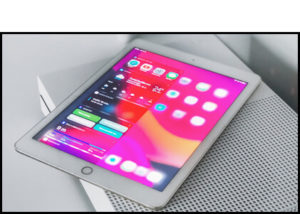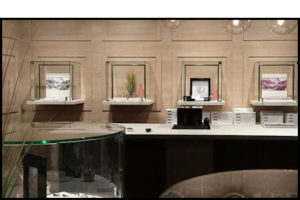Developing Your RE-Open Plan
When re-opening, be sure to set up for success on the front end while taking the proper precautions.
Re-opening during a global pandemic is an unprecedented event for retailers. The concerns and unknown risks about how to conduct business during this “new normal” are many. This is especially true in the jewelry business, as so much of the purchase experience is customer interaction combined with the look, touch, and feel of the merchandise.
After spending the past three months tackling and getting the right human resources and employment issues, retail leasing and access to financial relief, and operational adjustments needed to function remotely or in a new way — now we’re looking towards surviving long term, describes Tiffany Stevens, CEO and General Counsel for the Jewelers Vigilance Committee (JVC).
 “Be thoughtful about the decision to reopen and its potential long-term impacts on you,” advocates Stevens. “If you do re-open, set up for success on the front end, and take the proper precautions. We anticipate lawsuits and claims around safety and HR issues, as well as privacy matters, and you need to go to new lengths to protect your customers, employees, and business.”
“Be thoughtful about the decision to reopen and its potential long-term impacts on you,” advocates Stevens. “If you do re-open, set up for success on the front end, and take the proper precautions. We anticipate lawsuits and claims around safety and HR issues, as well as privacy matters, and you need to go to new lengths to protect your customers, employees, and business.”
Jewelers should have a policy in place, one that is written down and followed. “Make it available to all employees, even to consumers,” Stevens says. She advocates that if you don’t have an employee handbook in place, develop one now (JVC has a template online). Also, find a local employment attorney to review your policies.
Jewelers should strictly comply with orders and guidance issued by state and local governments about re-opening and operating during the pandemic, advises Tom McCormick, a partner at the law firm of Vorys, Sater, Seymour, and Pease, representing retailers in employment matters, in original content for JVC.
Implement a pandemic preparedness and response plan. Layout the decision to re-open with reference to state/local order and identify policies and procedures to follow while operating during the pandemic. This includes  protocols for conducting wellness assessment of staff that follows CDC guidelines; keeping your store clean that complies with CDC and OSHA guidance for maintaining a sanitary workplace, as well as for cleaning merchandise; Personal Protective Equipment (PPE), in compliance with state and local orders, and OSHA guidance; and for security practices, as Jewelers Security Alliance advocates jewelers secure the store entrance and limit number of people on the sales floor. Think about your store layout, as social distancing plans will need to consider both storefront and backroom/breakroom setup.
protocols for conducting wellness assessment of staff that follows CDC guidelines; keeping your store clean that complies with CDC and OSHA guidance for maintaining a sanitary workplace, as well as for cleaning merchandise; Personal Protective Equipment (PPE), in compliance with state and local orders, and OSHA guidance; and for security practices, as Jewelers Security Alliance advocates jewelers secure the store entrance and limit number of people on the sales floor. Think about your store layout, as social distancing plans will need to consider both storefront and backroom/breakroom setup.
Build an omni-channel staff. Retailers should invest in training and equipping store associates to engage with customers online so that store staff can guide customers at the start of the product-discovery journey and interact with them post-purchase. JA also suggests jewelers schedule virtual visits, set times to speak with customers via FaceTime or Zoom and continue to promote their e-commerce platforms for shop-at-home.
 Automate and simplify. To support reduced staffing levels, retailers should digitize and automate in-store activities to free up associates for higher-value work, cites McKinsey. This includes automating labor scheduling, expanding the use of self-checkout and mobile checkout, and providing remote management tools for store and field managers. Retailers might consider dedicating staffing for a ship from the store, re-designing “buy online, pick up in store” (BOPIS) processes, improving inventory management, and working with the supply chain function to reduce the end-to-end cost of order fulfillment. JSA advises jewelers to know the details and limits of their insurance coverage when delivering merchandise outside the store; avoid fixing or posting hours for pick-up instead by appointment with car description and license plate number obtained in advance. Inform local police that you are re-opening and engaging in curbside pick-up.
Automate and simplify. To support reduced staffing levels, retailers should digitize and automate in-store activities to free up associates for higher-value work, cites McKinsey. This includes automating labor scheduling, expanding the use of self-checkout and mobile checkout, and providing remote management tools for store and field managers. Retailers might consider dedicating staffing for a ship from the store, re-designing “buy online, pick up in store” (BOPIS) processes, improving inventory management, and working with the supply chain function to reduce the end-to-end cost of order fulfillment. JSA advises jewelers to know the details and limits of their insurance coverage when delivering merchandise outside the store; avoid fixing or posting hours for pick-up instead by appointment with car description and license plate number obtained in advance. Inform local police that you are re-opening and engaging in curbside pick-up.
Redefine the role of the store. Unless stores offer consumers a compelling value proposition, store traffic, which was already thinning pre-COVID, will “slow to a trickle,” reports McKinsey. Consumers are used to staying home now for weeks at a time and buying a variety of products online. In the future, they won’t visit stores unless retailers give them a good reason. To cater to changing customer preferences, stores must deliver a superior product-discovery experience and provide access to exclusive merchandise (i.e., “in-store only” and “in-store first” product launches). Moreover, Unity Marketing advocates retailers assess what their brand ultimately means and how they can communicate that consistently across all five senses to create a multi-sensory retail experience.
Communication is Key. As you return to business and welcome back customers to your store, you’ll want to be clear and transparent about the steps you are taking to alleviate concerns of advocates JA in its Back to Basics Toolkit.  Your staff and customers don’t need to just be safe in your store; they need to feel safe, welcome, and heard. JA strongly encourages jewelers to communicate messaging that reflects best practices for conducting business with honesty, integrity, and transparency; respect for the fundamental human rights of all employees, business partners, and customers; and commitment to high standards of health and safety. Keep messaging on point. If you implement new safety procedures, explain them directly. Post store hours, appointment options, and health and safety policy on the website, social media, and throughout the store. Email customers regarding reopening and what’s being done to ensure safety.
Your staff and customers don’t need to just be safe in your store; they need to feel safe, welcome, and heard. JA strongly encourages jewelers to communicate messaging that reflects best practices for conducting business with honesty, integrity, and transparency; respect for the fundamental human rights of all employees, business partners, and customers; and commitment to high standards of health and safety. Keep messaging on point. If you implement new safety procedures, explain them directly. Post store hours, appointment options, and health and safety policy on the website, social media, and throughout the store. Email customers regarding reopening and what’s being done to ensure safety.
Communicate calmly, compassionately, and in a voice that is authentically yours. Let customers know what to expect in advance, then again in more detail once in-store. Make sure that customers know and can see the effort you are making through signage and communications, as well as visible actions like hand washing and cleaning the merchandise and cases in store.
Leave a Reply
You must be logged in to post a comment.